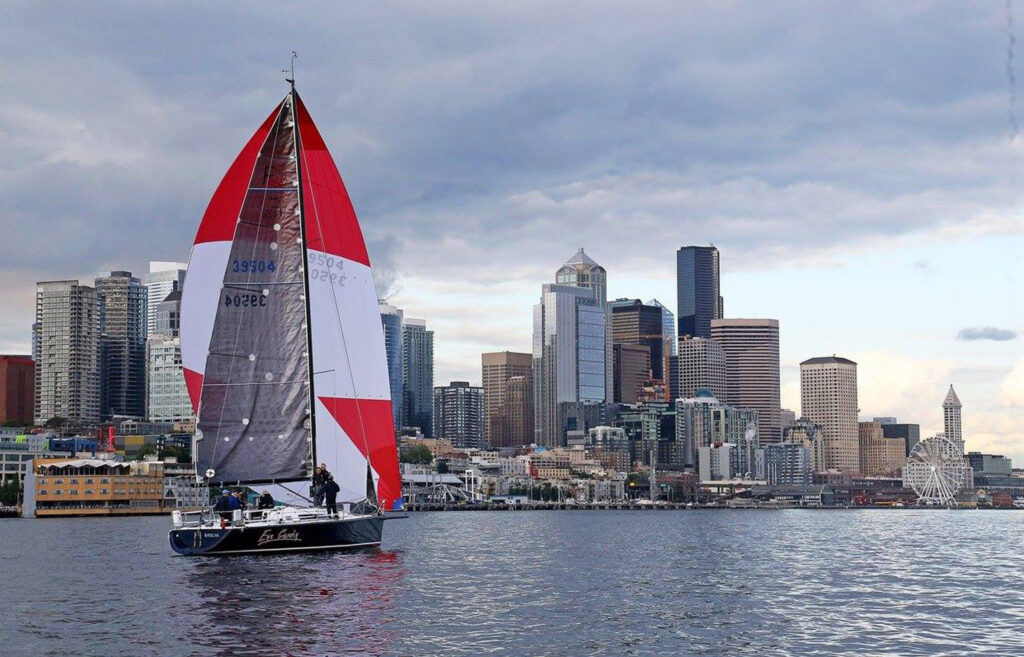
Downtown Sailing Series, Parkinson’s Race Return to Elliott Bay
It’s time to go back to the bay (Elliott Bay, that is) on Thursdays for Seattle’s much anticipated annual collection of sailboat racing events—the Downtown Sailing Series.
The weekly series, held at Elliott Bay Marina, has chosen a “Back to the Future” theme, focusing on the gradual return to post-pandemic normalcy with the boating schedule. (DeLorean cars with flux capacitors, not required.)
While many previous series events raised funds for battling leukemia, this year the 18th annual event will kick off on June 11 with the APDA Parkinson’s Race, to increase awareness and raise funds for the American Parkinson Disease Association, which supports the more than 1 million people and their families who are battling Parkinson’s Disease. Since 1961, APDA has raised over $226 million for patient services, awareness campaigns, and research grants to fight this chronic neurological disorder.
The Parkinson’s Race runs from noon to 6 p.m., with boats of all sizes racing (or just cruising) past the Seattle skyline and looping back to the marina. The event is immediately followed by post-regatta party and networking event at the marina, featuring great food, drinks, and live music. The party will also include an auction and raffle prizes with 100% of the proceeds going to APDA.
After the June 11 race, the festivities continue each Thursday night with informal races and post-race events hosted by an array of sponsors: Elliott Bay Yacht Sales (June 16); Monkeyfist Marine (June 23); CSR Marine (June 30); Fisheries Supply (July 7); Sea Hawk Paints (July 14); Splash N’ Detail (July 21); Seattle Dive (July 28); and Palisade Restaurant (Aug. 4). Then, on Aug. 11, Northwest Yachting magazine will close out the series event by sponsoring The Rutten Race, which honors Tom Rutten, who was an avid sailor, founder of the Downtown Sailing Series, and a member of the NWY family.
Rules of the races, schedules, and registration information can be found at: downtownsailingseries.com.
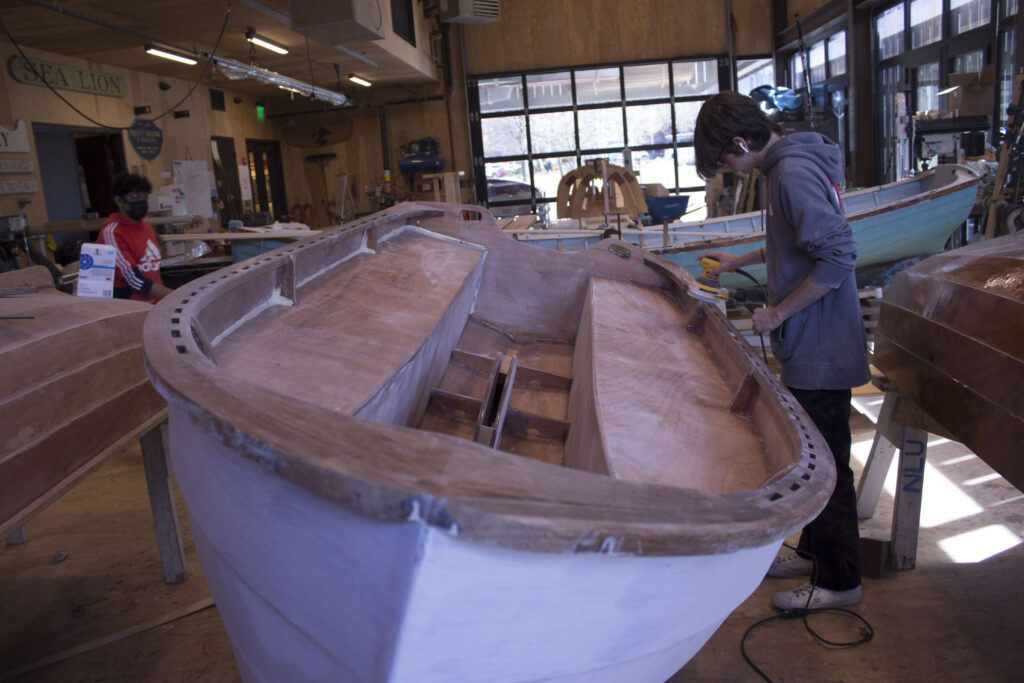
Boats Made by Kids, for Kids, Added to CWB Sailing Program
As the summer boating season kicks off, local kids are now helping others to learn how to sail. This month, the Center for Wooden Boats (CWB) in South Lake Union will start its Summer Sailing camps using new boats that were built specifically for young sailors, by young sailors.
The three new boats, known as Lake Union Swifts, were built by a group of teenage students as part of a maritime internship program that began in 2019, with local high schools including Gibson Ek in Issaquah and the Big Picture School in Bellevue. The course is available to kids as young as 8-years- old, but the majority of students tend to be pre-teen on up to high-school age, said CWB’s head boatwright Dustin Epsey.
Construction of the Swifts, made from a modified kit by Maryland-based Chesapeake Light Craft, was done for the first time in the CWB’s boatshop and supervised by Epsey. A fourth Swift kit has also been purchased for future use in CWB courses, he said.
The Lake Union Swifts are variants of Chesapeake’s popular Tenderly Dinghy kit boats. Some of the modifications used in the Swifts include a jib and bowsprit in the sloop configuration. “They’re light, beautiful 11-foot boats with a pivoting centerboard,” Epsey said. “They also have built-in bench seating,” which aids in flotation and a quick recovery in case of capsizes, he added.
The three new watercraft, which have yet to be named, will be used this summer to teach courses, in collaboration with the Pacific Science Center, such as The Science of Sailing, which focuses on the physics of navigation. The hands-on course will investigate such topics as the cause and effect between wind in sails and control at the helm.
Youth sailing programs will run through August and are already nearly booked for the summer, but some spots may still be open. For more information about registering and to learn more about the new Lake Union swift vessels, visit: cwb.org.
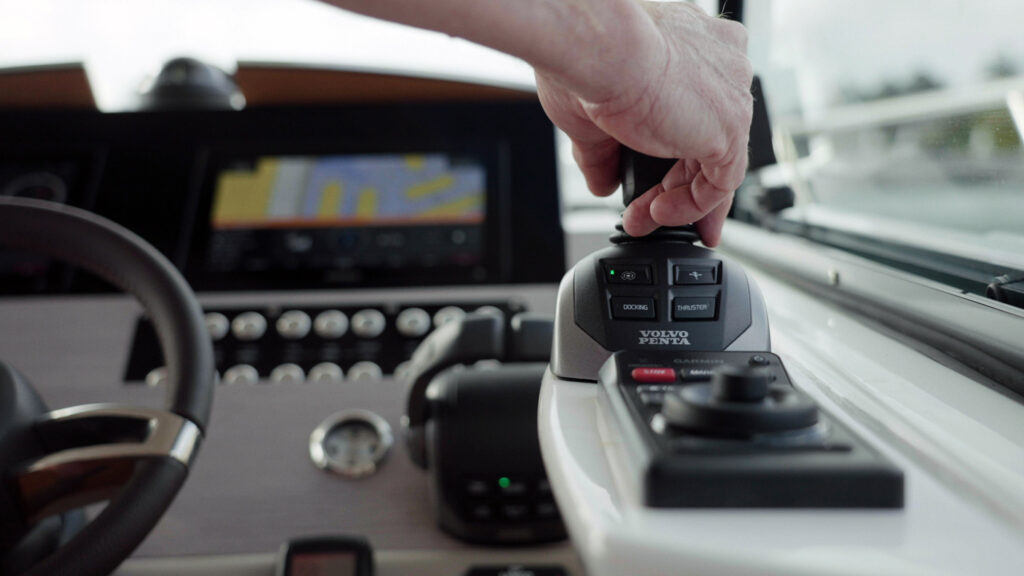
Volvo Penta Offers Retrofits of Assisted Docking on Older Boats
Volvo Penta’s IPS propulsion system has made the chore of docking much simpler for boaters by using a combination of automated actions and improved manual controls on vessels made in the last few years. Now, the company has adapted the tech to make retrofits of the assisted docking system for boats made within the last 10 years.
The system, which the company said anticipates and automates a skipper’s actions during docking procedures, takes into account other factors such as windspeed and current to ensure the proper course is kept. Performance of the assisted docking system can also improve over time with repeated use and software upgrades, the company said.
Retrofits to add assisted docking capabilities can now be made in the aftermarket for D6-IPS, D8-IPS and D11-IPS packages in vessels made as early as 2012 for EVCE and EVC2. The retrofitting to be performed will be “boat specific,” Volvo Penta said, from a minor software update to extensive upgrade that may also include the addition of a joystick, a dynamic positioning system antenna, and/or a glass cockpit interface.
To find out more information on the retrofits or to find out if your vessel is eligible, contact the local experts at Coastal Marine in Seattle via: coastalmarineengine.com.
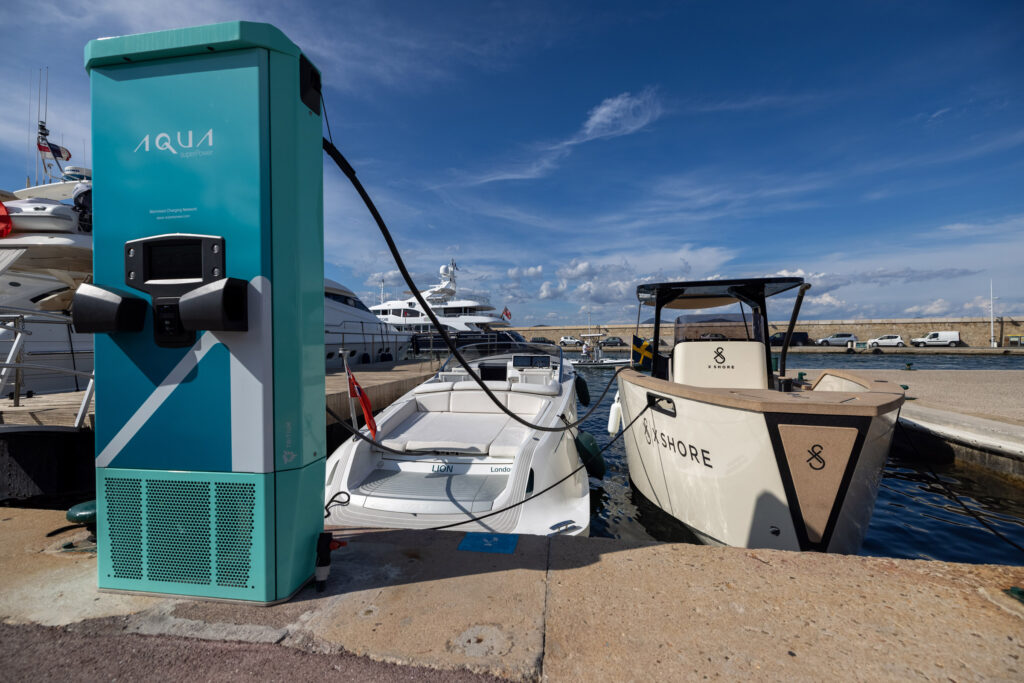
E-Boat Market Charges Forward with Aqua SuperPower, X Shore, Evoy Alliances
Coming soon to a marina near you? The electric boating wave is growing and may break further into the North American market with the recent European alliance formed between an e-charging station maker, an e-boat manufacturer, and an electric engine firm—all of which are expanding their reach into the United States and Canada.
Aqua SuperPower, a charging network company based in the U.K., has inked an agreement with Swedish e-boat builder X Shore and Norwegian electric engine maker Evoy to promote their products throughout the North America. The agreement represents three key elements needed to expand electric vehicle (EV) boating on this side of the Atlantic: new boat designs, more efficient electric motors, and a reliable power network to keep the systems charged.
Aqua SuperPower, which calls itself the first marine-specific electric charging network, has released a 150 kW station designed for EV use in marinas around the world. Built to IP65 standards and constructed using Hydro CIRCAL recycled aluminum, each station provides AC and DC outlets to allow powerboats to rapidly recharge while out, about, and on the go, much like the e-charging stations spotted at retailers, gas stations, and other outlets for electric cars. Currently, the company has about 150 charging stations set up on the Côte d’Azur and other European locations, as well as just launched units into Canada.
To help promote this expansion, Aqua, X Shore, and Evoy are working together this year at boat shows across Canada and the U.S. to educate boaters about EV technology and their collective efforts to reduce the carbon footprint in the marine industry. Highlighted in April 2021 issue of Northwest Yaching, X Shore made waves last year with the release of its Eelex 8000 all-electric tender. Evoy, as well, turned heads last year in North America with its all-electric, 120-400 hp outboard motors, which achieved top speeds of more than 60 knots in test trials.
For more details developing tech, and on AquaSuperPower, go to: aqua-superpower.com.
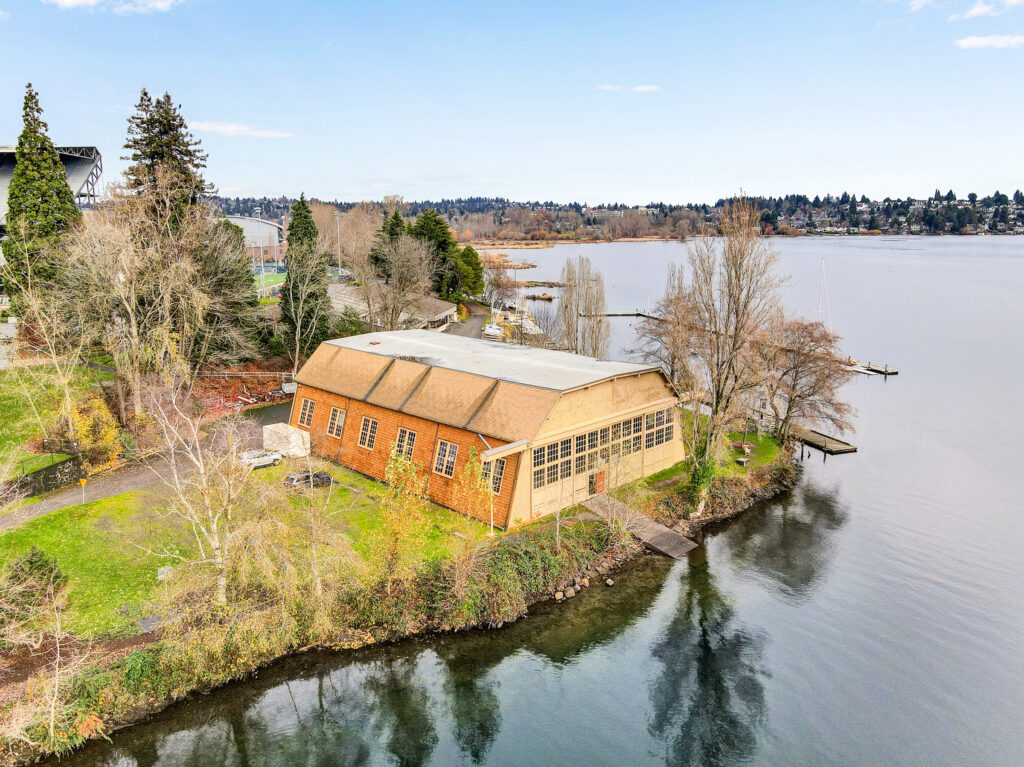
ASUW Receives $7 Million from Microsoft, NanoString for Shell House Restoration Project
The long-running project to restore the century-old Shell House at the University of Washington has been given a huge boost with a recent donation of $7 million.
The source of the funds came from two personal donations from Brad Smith, president of Microsoft, and Kathy Surace-Smith, vice president of NanoString Technologies. Their combined pledges totaled $5 million for the restoration effort. Microsoft Philanthropies also dedicated an additional $2 million, which will be put in use to meet the expected $18.5 million cost to fully restore the Shell House.
As covered in NWY’s August 2021 feature on the campaign, the 12,000-square-foot Shell House was originally built on the Montlake Cut in 1918, near the end of World War I, as a seaplane hangar for the U.S. Navy. After the war ended, the structure was quickly converted into the home of UW’s rowing team, where it stayed for several decades. In 2018, the structure was awarded historical landmark status.
The storied structure was where famed boat designer and builder George Pocock crafted the legendary Husky Clipper racing shell, which earned the eight-rower crew a gold in 1936, and again in the 1948 and 1952 games. Wooden racing hulls designed by Pocock eventually won a total of 21 Olympic gold medals from 1920 to 1964. The story of Pocock and the Olympic team’s heroic, underdog performance in Nazi-era Berlin was told in Daniel James Brown’s 2013 book, The Boys in the Boat, which will soon be released as a feature film, directed by George Clooney.
The newly donated renovation funds will be used towards The Next 100 Years campaign to create a learning and gathering space for UW students and the broader community. Work to be done with funds will involve restoration of the loft from which Pocock made his award-winning designs, as well as the giant sliding wooden doors at the entrance to the structure. Plans also include the creation of museum quality displays of famous boats, classroom spaces, a café, a gift shop, and historical presentations about the building’s rowing, military, and aviation history.
To contribute to the campaign, or for the latest updates on the Shell House, go to: asuwshellhouse.uw.edu.